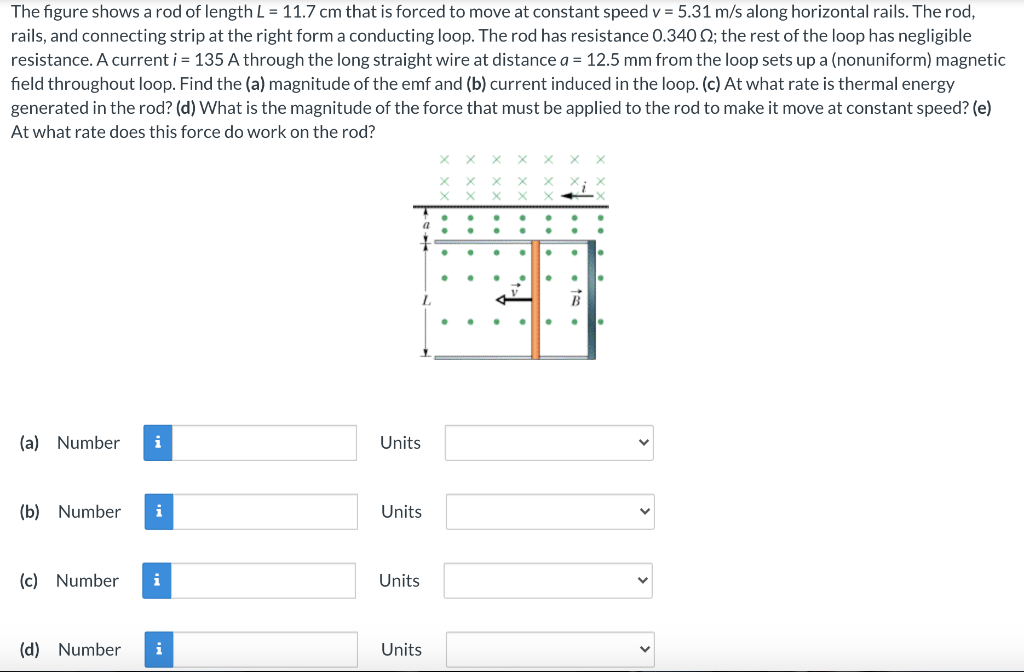The figure shows a rod of length L = 11.7 cm that is forced to move at constant speed v = 5.31 m/s along horizontal rails. The rod, rails, and connecting strip at the right form a conducting loop. The rod has resistance 0.340 Ω; the rest of the loop has negligible resistance. A current i = 135 A through the long straight wire at distance a = 12.5 mm from the loop sets up a (nonuniform) magnetic field throughout loop. Find the (a) magnitude of the emf and (b) current induced in the loop. (c) At what rate is thermal energy generated in the rod? (d) What is the magnitude of the force that must be applied to the rod to make it move at constant speed? (e) At what rate does this force do work on the rod? (a) Number Units (b) Number Units (c) Number Units (d) Number Units
